Lise Deguire's Blog
October 3, 2025
A New Book
June 1, 2025
Copy of Burn Survivors Around the World Help to Guide Ground-Breaking Research
May 30, 2025
Burn Survivors Around the World Help to Guide Ground-Breaking Research
March 6, 2025
Being the Burned Girl on the Beach
I recently escaped to the tropics with my husband, Doug, for some sunshine and sand. I was excited to have a brief respite from my work as a psychologist. As most women might, I prepared for my getaway by sitting for the rare winter pedicure and buying a new dress and beach cover-up. Unlike most women, I also mentally prepared to be the burned girl at the beach.
I am scarred from my head down almost to my toes. When I was 4 years old, I suffered third-degree burns on two-thirds of my body. My mother had mistakenly used a household solvent as a lighter fluid, and the solvent exploded into a fire that I barely survived. Decades later, my body is permanently covered with scars ― thickened skin, too red or too white ― from my calves to a couple of pale scars right above my eyebrows. You can’t miss me.
Doug and I arrived at our swanky hotel and were greeted by a woman holding a tray of sweetened iced tea. She smiled at me briefly. Then her eyes left my gaze, and traveled slowly down my arms, trailing the path of my exposed scars. Her eyes rose back up, and she resumed eye contact. I continued conversing with her, calmly smiling, pretending I hadn’t seen her look me up and down.
We were escorted to our beachfront suite. We tossed our bags, found two white chaise lounges on the warm sand, and blissfully turned our faces to the sunshine.
“My name is Rosalina. Can I bring you something to drink?” I glanced up at the server, a lovely, friendly woman. Again, her eyes left mine, walked down the lengths of my arms and eventually returned to my face. I took a deep breath and smiled, politely ignoring her stare.
At night, Doug and I settled into an open-air restaurant, with high thatched ceilings and stucco walls. We sat in the candlelight, palm trees swaying nearby. I was wearing the new dress that I purchased for the trip. I don’t usually wear sleeveless dresses, but when it is 85 degrees out, what are the options? Also, in case you don’t know (and you most likely don’t), severely burned skin cannot sweat, leaving burned people dangerously susceptible to heat stroke. So, there are times to go sleeveless, and that tropical night was one of them.
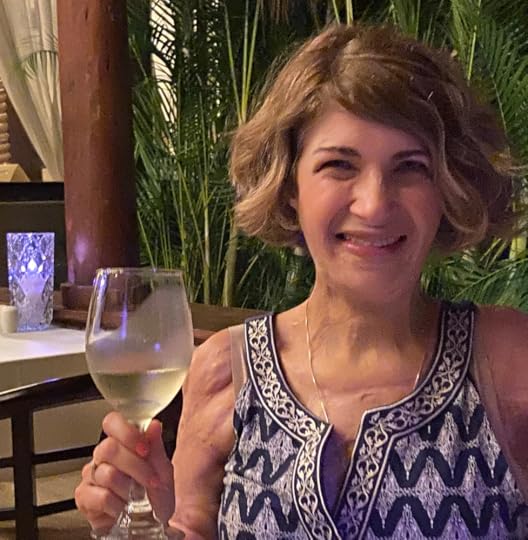
I relaxed in my silky blue dress, feeling pretty. Then, out the corner of my eye, I saw a man at the table to my right. He turned and pretended he was looking out the window. In reality, he had turned just to look at me, eyebrows knitted, mouth agape.
All these staring incidents happened within five hours of our hotel arrival.
Despite having undergone 75 surgical procedures, I can’t change being scarred. I also can’t change how other people view my scars. Curiosity about noticeable difference is inevitable. It is human nature to wonder about anyone who looks different. To avoid being stared at, my only recourse would be to hide away in my house. What kind of life would that be?
I want to go to the beach, too.
My only weapon is how I carry myself. I am so friendly, so warm, so kind and so open that people eventually, or even quickly, forget about my scars. All that warmth and friendliness disarms people. Given the severity of my arm scars and the attention they draw, “disarming” people with charm seems like quite a weapon indeed.
Did I go swimming? Yes. Did I walk around in my bathing suit? Increasingly so. After that first day, no one stared at me. I assume that everyone at the small resort had likely spotted the new burned girl at the beach. Their curiosity passed. I became just another middle-aged woman on vacation.
Still, it was mental work. It is tedious to manage staring encounters, evenly maintaining eye contact and knowing the person is thinking, “What in God’s name happened to her?” I keep smiling as I watch people recover from the shock of ... me. They don’t even realize that I am making the moment comfortable — for them.
Here are the requisite burned-girl skills:
Emotional acceptance of my body as it is (truly a high bar for anyone).
Assuming that people will react to scars and that they can’t help it.
Loving appreciation of myself as being worthy and valuable, despite looking different.
Solid social skills (making eye contact, using a pleasant vocal tone, smiling, initiating conversation).
Maintenance of a reassuring manner to convey that I am well and require no help.
Letting each interaction go without resentment and still enjoying my day.
Like anything practiced every day for decades, these burned-girl skills are now second nature. Still, each incident is draining, and each incident, if I think about it, could make me weep.
Yet despite everything I just wrote ― all this pain, all this struggling, healing, coping, managing, charming, overcoming ― how different is this for anyone who walks in the room different in some way?
In my work as a psychologist, I hear countless stories about ways that people feel inadequate and inferior. My difference is visible ― there for all to behold. But I am not the only person working hard to fit in. Many of us carry a trauma history, a disability or a perceived weakness that we hide, fearful of rejection if anyone learns who we really are. Maybe my struggles as the burned girl, unusual as they appear, are not that unusual after all.
Perhaps what unites humans most powerfully is the same force that seems to divide us: difference. Most of us do feel unusual in some way, and most of us struggle with shame. The variations are endless ― all the ways that people feel different, diminished, alone. Ideally, our differences could form a lens of shared compassion, a way to relate to each other’s true essence, an avenue of connection on the deepest level.
When you encounter those of us with visible difference (the preferred term instead of “disfigured”), you can help by greeting us warmly. So many people either stare or quickly look away, trying so hard not to stare that it is as if we no longer exist. You can’t help noticing our differences. Still, please smile and say hello. That warm welcome could make all the difference.
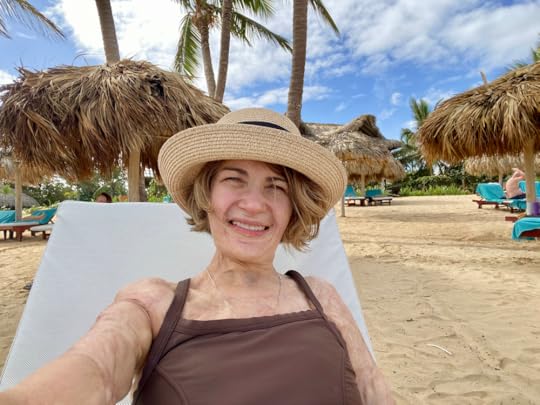
So, I am the burned girl at the beach. I am so different from you, and so very like you. My difference is visible ― a burden I shoulder for all to see. Your difference may be invisible, so no one stares, but I imagine you carry one just the same. Did you struggle with body image? Me too. Did you labor to accept yourself as you were? Me too. Have you decided to no longer care what people think? Oh, my friend, it took me years, but me too.
Lise Deguire's multiple award-winning memoir, Flashback Girl: Lessons on Resilience from a Burn Survivor, is available for purchase on Amazon, Barnes & Noble, Newtown Book Shop and The Commonplace Reader.
December 22, 2024
Angels who leave Christmas trees
When I was four years old, an angel left me my very own Christmas tree.
I lay on a soft twin bed, tucked in the corner of a wood-paneled room. The room was sparsely furnished and dark, with a glimmer of light shining under the door. I had never been in this room prior to this Christmas Eve. The surprising tree stood to my left. Behind it, and me, a window looked out on a white snowy Boston day.
The tree was my height, a four-year-old girl height. If I could have spread my arms out to the sides, I might have touched it from end to end. But I couldn’t, because my arms were roped to my torso by tight, freshly healing scars. The little tree smelled like fresh air, forest, and pine. Its heady scent was a long way from the disinfectant and rubbing alcohol that now dominated my world. Ironically the scent echoed the same smell as that last day in New Hampshire, the air full of cedar trees. In fact, this Christmas tree smelled just like that day of vacation, that day which ended in explosion, fire, and horror. (See Flashback Girl for more.)
My family was somewhere, somewhere in the unfamiliar apartment. I couldn’t hear them; I didn’t know where. However, I was used to being alone now. I had spent the last four months without them in the hospital. My dad showed up on weekends, gamely pushing me in my hospital go-cart around the corridors. If my mother came, I have no memory of her. (To be clear, I am told that she came, and I am sure that she did. But I have not a single memory of my mother beside me.)
My brother Marc came to visit at least once. He was my favorite person; I adored him. Prior to the fire, I had followed him everywhere like a puppy in love. Whatever he wanted to play, I would play. Whatever he said was true, was true. I was like a tiny disciple. Little Marc, 9 years old, made the trip up to Boston to see me and our mother. I don’t remember him being there. I am told that when he came to see me, I turned my face away and would not speak to him. I would not speak to him, my brother, my everything.
That may be when my father realized that I was not well.
I don’t know when my parents began the campaign to take me out of the hospital for that one Christmas night. My cousin tells me that my parents worked hard to get me out. The next night, I went right back to the sterile hospital ward for another month. But I had this one night out, one special Christmas eve with my very own Christmas tree, away from the white capped nurses, and the screaming burned children.
The owner of this apartment, Judy, was a friend of the family. I don’t remember a single thing about her, but I’m told she visited me regularly in the hospital. I know that she vacated her own apartment for the holiday, so that we could stay there. I do not know for sure, but I believe it was her idea to put that tiny tree in my room. (My parents would never think of that). That tree came from Judy, whom I don’t even remember, who did all this so a little girl could have one peaceful Christmas morning.
Some people are so kind. Their hearts seem to burst with generosity, warming the very air around them. Some people’s smiles calm us. Some people center us just by entering the room. You know those people, right? How many of them are there? Where do they come from?
I once had a discussion with a minister friend about whether God existed. I was not raised religiously; my parents were atheists. Unlike them, I have always been spiritually inclined (perhaps naively, perhaps wisely). So, I said to my minister friend, “I don’t believe in God per se. But I do believe that people can be very kind, and that people have mysteriously lifted me up, often at the exact time that I needed. So, I believe in the powerful force of human kindness.”
He replied (and I never forgot this), “How do you know that those people weren’t sent by God to help you?”
I don’t know.
This story, this Christmas morning in Boston, this is the first Christmas I can remember. That little tree is my very first Christmas memory. This bleak fact makes me weep. I wish my first Christmas memory were in my own home, surrounded by my family, cozy and warm, not alone, peering at a tree in a strange dark room.
But notice the other side of the story. Someone gave me her bed for the holiday. Someone set up a tiny, sweet-smelling tree, just for me. Someone vacated her apartment on a holiday and loaned it to my traumatized family.
Is that God? Are the extraordinary people, who do powerfully kind acts, sent by God? Perhaps I need to update my image of God. To me, God looks like the painting on the Sistine chapel, white-bearded, white-skinned, masculine. That image does not accommodate this energetic swirl of people, magically showing up right when a suffering person needs help.
Nor does this narrative explain all the times when no one shows up at all.
I don’t know; here is what I think. There is magic. There are forces we don’t understand. There is grace. There are moments of abandonment and despair when nobody shows up. And there are moments of grace and light when someone does. That someone may not be who you expect. But a neighbor might leave yellow roses at your doorstep. A new doctor turns out to be unexpectedly kind. A pajama-clad friend arrives to help mop your flooded basement. People pop up out of nowhere, ready to help. Maybe my minister friend was right.
So, I ask you, my reader friend, to notice the people who struggle around you. So many people are hurting. If you have the strength and the energy, show up. Make a phone call, pay a bill, or just listen. Witness someone’s pain with warmth and care. Help if you can.
Be the angel when you can. Celebrate the angels when they show up for you.
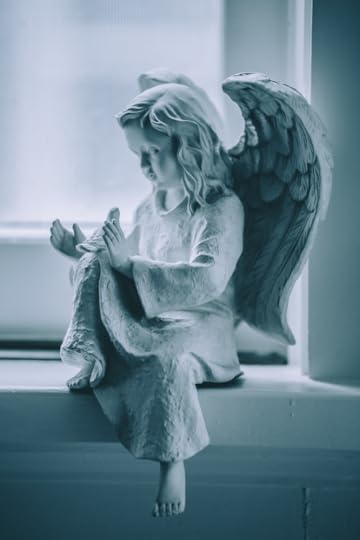
Lise Deguire's multiple award-winning memoir, Flashback Girl: Lessons on Resilience from a Burn Survivor, is available for purchase on Amazon, Barnes & Noble, Newtown Book Shop and The Commonplace Reader.
November 10, 2024
"This is America?"
In first grade, we stood each morning to recite the Pledge of Allegiance. It was the late 1960s and all girls were required to wear dresses at school. I would stand respectfully in my hand-me-down dress, colored with groovy orange and purple flowers. But sometimes I didn’t put my hand on my heart. Sometimes I mouthed the words, but didn’t say them aloud.
I was not raised to love the United States. My parents were horrified by the Vietnam War, its needless bloodshed, the drafted young men who never returned home. My father, in particular, had a deep sensitivity for the oppressed. His childhood best friend (who may or may not have been his first lover) was Black. My dad walked in the famous “I Have a Dream” civil rights march, and later, in gay rights events.
All my life I have had an uneasy relationship with this country that I call home. I have had a good life here. I grew up in safe neighborhoods with good schools, attended a first-class university, bought a lovely home, and was free to do everything I set out to do. Still, I don’t know that I have ever been “proud to be an American.” My mind whispers, “Yes I am free, but many others are oppressed.” I know our history is more complex, tinged with ugliness along with bright light.
***
One autumn, many years ago, my youngest daughter returned home from first grade. Picture her: blonde curls, a beaming smile, and big blue eyes. Like me, she wore a flowered dress to school, but not because she was required; she chose her dress. Anna had been learning about Thanksgiving and Christopher Columbus discovering America.
I turned to her, "You know, Columbus only discovered America from the standpoint of the Europeans, who didn’t know it was here. But there were already many people living in America."
"What?" her innocent, loving face turned toward mine.
“Well, yes. You learned about Native Americans, didn’t you?”
“Yes! We live on the land of the Lenni-Lenape.”
“Exactly. So, the Lenni-Lanape were already here when Christopher Columbus came, right?”
“Oh. I guess so,” her little face looking puzzled.
“So he didn’t “discover” America. The land was here, and people like the Lenni-Lenape were already on it. Then he, and the Europeans who came after him, pushed the Native Americans off their own land, and many of them were killed.”
“What???”
“Yes. That is the actual story of what happened.” I gazed at my daughter. She looked shocked.
“Why don’t they tell us that?”
“I’m not sure. Maybe they don’t want to upset you.”
These are the stories that we shield from our children, lest our history cause them distress, which I think this is a grievous mistake. Anna weathered that conversation fine; I doubt she even remembers it. What I can tell you is that Anna is now a woman with deep compassion for the oppressed. Knowing our history did not wound her, it was an element that helped her grow up wise and kind. Knowing our history is vital, both individually and as a nation.
***
Our country has never really been what it says it is. We have always been a nation forged on the ashes of broken pacts, paved over the bones of the Indigenous people who were here first.
Then we systematically enslaved ten million Black people.
Then, yes, we won a revolution, fought on the principal that “All Men Are Created Equal.” These are incredible, inspirational words. These beautiful words were written by a slave holder who slept for years with his deceased wife’s enslaved half-sister. Inspired by his words, we won the Revolutionary War, and then white men had the right to vote.
It took women another 137 years to win the right to vote. That happened only 104 years ago. Recently, in 2024, some men have asserted that if women do not vote in accordance with their husbands, women should no longer be able to vote. Really.
Forgive me if “All Men Are Created Equal” rings hollow to me.
I am cynical about this country; I have always been. I think that growing up disfigured and bullied made me acutely aware of disadvantage, even though I was a white girl with financial means. I have always been good at sniffing out the acrid stench of hypocrisy.
This week’s election results shocked many of us. More than half of our country chose a convicted felon for president, a man who has made scores of racist, misogynistic, homophobic, and xenophobic insults. Still, he was preferred to an honorable and intelligent Black woman. “This is America?,” we asked, shaking our heads with stunned grief.
Yes, this is America. Racism and sexism were baked into our origin but we prefer to look the other way. We glowingly retell the story of World War II, when America saved the world from fascism. We tell the story of our inspired Constitution, and the Bill of Rights. We point to Martin Luther King’s “long arc of justice,” under which more and more people attained equal rights.
We have indeed done great things as a country. My friends who are immigrants sternly advise me that every nation has terrible problems. I’m sure they are correct. Still, minimizing, avoiding and denying the racism and misogyny that has always been knitted into our history
only dooms us to repeat mistakes.
As a psychologist, I sometimes must guide clients into uncomfortable discussions about themselves, their actions, their history, their words. If people want to change, and to build better lives with love and connection, they have to know when they are messing up. That knowledge empowers people to do better. That knowledge would help our country do better as well.
I don’t write this piece to make anyone feel guilty about being white or having privilege. I’m white and I have plenty of privilege and it is quite pleasant. I personally have never killed a Native American, or enslaved a Black person, and I’m sure you haven’t either. I'm also not saying that everyone who voted for Trump is racist or sexist. But this is the history of our country, and it reverberates still. Denial only empowers the reverberations, because we cannot correct that which we refuse to see.
None of us know what will happen next. I hope the dark predictions on TV never come to pass. I hope American democracy endures. I hope we are all safe and well, united in kindness and respect with one another. I hope our great country -- and yes, I did say great country, because there is a lot of good here-- survives and thrives as it always has.
For those of you who are scared and exhausted, I hear you. I’m climbing out of a dark hole too, blinking into the sun. For those of you who are exultant, I hope you are right. I hope that this election somehow brings prosperity and safety to every American.
To every American. That’s the key. Every one of us.
***
Coda: That was the original ending to this piece. I shared it with my daughter Anna, she of the Lenni-Lenape conversation. Now an educated and observant 25 year old, Anna remarked, “It’s good Mom, but it’s. . . missing something. Your pieces are always about resilience, and helping people to cope and have hope. Where is that part?”
I laughed, chagrined. “Oh, hope!! Ugh. I’m too depleted to write about hope. I'm not up for hope today.”
Anna smiled kindly through the Facetime lens. “I know. It’s been an exhausting week."
“But you are right. That part is missing.” (I told you Anna was wise).
End Part I
Part II: Hope and Coping; coming soon
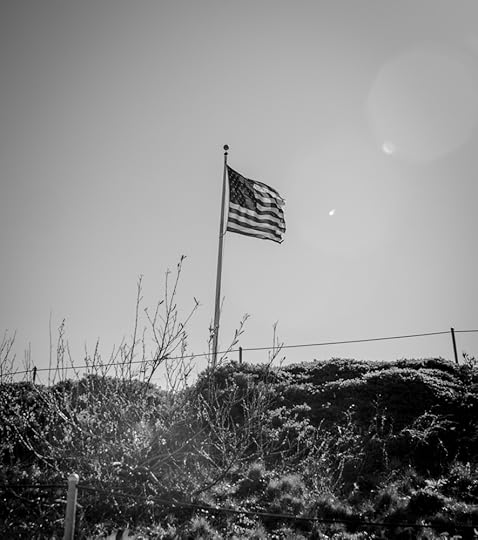
Lise Deguire's multiple award-winning memoir, Flashback Girl: Lessons on Resilience from a Burn Survivor, is available for purchase on Amazon, Barnes & Noble, Newtown Book Shop and The Commonplace Reader. Check out her TEDx talk "Scarred Not Scary"
October 3, 2024
Life at an Artists' Residency, (Which is and isn't just like Camp)
Yesterday I sat down mid-afternoon, under a robin’s egg blue sky, gazing at the treetops beginning to turn yellow and red. I picked up my book and started to read. Immediately I thought, “I’m reading in the middle of the afternoon? I really should get back to work.” Then I remembered, there was no work. Or perhaps better stated, this was my work. Relaxing, reading, enjoying the scenery. Writing when I want to. Watching the orange monarch butterflies flit past, drinking their fill. Just like them, I am here to feed my heart on this mountain.
I started writing my book, Flashback Girl, in 2017. I wrote in the mornings before work, on weekends, and in between clients. It took a year. After that, I queried agents, and submitted to publishers, and began speaking gigs. I developed an author website, posted on social media, and started a blog, all efforts to connect with readers.
When my book was rejected by traditional publishers, I set off to self-publish, hiring editors and designers and teaching myself the business of publishing. Finally, when the book came out, I did four months straight of publicity.
These efforts succeeded beyond my dreams and has led to my current life. I treat psychotherapy clients four days a week. The rest of the time, I prepare for presentations, write articles and blogs, book travel for the next presentation, keep up on social media, and apply for new opportunities. Oh right, and I am also a wife, mother, dog mother, and devoted friend.
I’m exhausted.
Last year, I learned about artists residencies, where people come to concentrate solely on their art. What an idea! What heaven! I applied and was granted this one, a blissful two week stay at Craigardan, in the New York Adirondack State Park.

Craigardan sits on over 300 acres of protected land, in the middle of the Adirondack State Park. They have plans to build permanent structures, but currently, it’s more like glamping. We each (six artists in all) have a private but plain wooden cabin, furnished with a single bed, a clothes rack, a bedside table, a chair, and a larger table for writing. The bathrooms are a few steps outside, creating some anxiety for those of us who contemplate nighttime urination. The kitchen is a walk across the meadow.
You might think this sounds a bit rustic for a woman of my age, formerly seen in luxurious trips to Antartica and the Norwegian Fyords. However, no fear! Whatever we have experienced in our youth remains endlessly familiar, and in my youth, I went to camp for five summers at Birch Farm.
Birch Farm was a horse camp for girls, nestled in the same Adirondack Mountains. We lived in cabins, only slightly bigger than my current abode. The bathroom was just up the hill, and we walked to it with flashlights at night, just as I did last night.
It was a small camp, just 20 girls in all, and there were never actually 20 girls, as far as I can remember. We had three bunk houses: Bunk Low, Bunk High, and Bunk Very High. Each bunk had the same rough pine walls that now line my cabin.
We went to Garnet Lake every afternoon and took riding, tennis and swimming lessons every morning. I learned to ride pretty well, failed hardily at tennis, and won “Most Improved” in swimming. That wasn’t too hard, because I started out as the worst swimmer but kept… improving. We sang on car rides. We read at the lake. We shared packs of gum with our bunkmates. At night we played Kick the Can and Hide and Seek.
The cabin walls are the same. The woods are the same. The sky is the same. The stars are the same. The crows are the same. The butterflies are the same. Instead of horses, we have chickens, sheep, pigs, and one black cat. Instead of horse-crazy girls, I am with fellow crazy women artists.
Surrounded by beauty and an open expanse of time, my internal clock struggles to adjust. This morning, I woke up to a sparkling blue sky, with a few wispy pink cirrus clouds sprinkled in. I walked to the kitchen area for coffee, gazing at the beauty all around. But my internal alarm began clanging, “What do I need to do today? How should I make best use of this time?”
I thought for a minute. What was the day’s schedule again? There was something on it, I remembered, something in the morning.
“Well, we are walking to feed the pigs at 9:00.”
The ridiculousness of my internal reply left me giggling alone in the kitchen. I washed up, my morning routine shockingly abbreviated by not giving a hoot how I look. Then I did my morning cleanup, which consisted of sweeping out my private cabin, which is about 7 by 14 feet. That took 4 minutes. Then I was ready for the pigs.
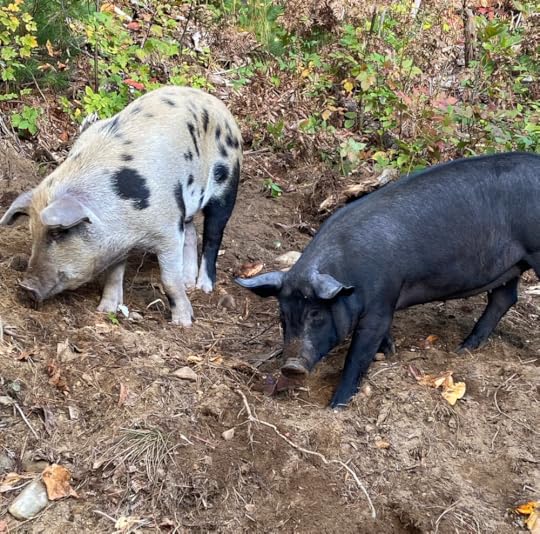
Time stretches here. When I leave my cabin, I tilt my head back to see the broad expanse of blue sky, uninterrupted by building or phone lines. We all took a walk yesterday, huffing our way up a steep slope, balancing on granite stones. We came to a brook, wooded on both sides, with a downed tree limb, perfect for perching. I am the oldest artist here, so I was happy to sit, watching the younger women scamper on the rocks in the brook. One woman leapt from stone to stone like a gazelle. Another sang a song about rivers.
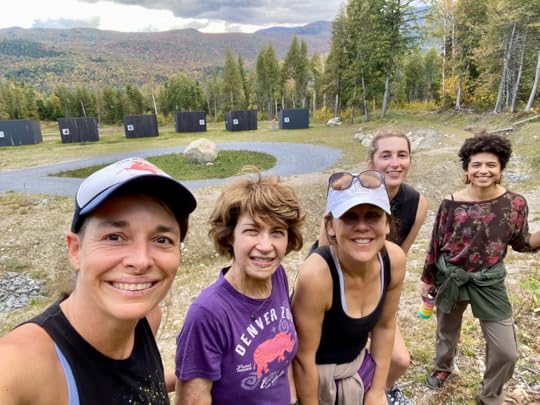
When we are not together, each is off working or resting. Four of us are writers and poets, revising, or writing, or working on submissions. One woman makes living art in the woods, creating patterns with moss, leaves and flowers. Each afternoon, we trample off to discover what she had created that day. Another artist knits sunset-hued scarves out of yarn she has spun.
Our conversation is remarkably free from pretense. At night we talk about psychedelic medicines, witchcraft, home schooling, transphobia, Christianity, love, and hatred.
I will write this week; I already have. I also have other plans. For two weeks, I hope to feel my stomach relax, to have my shoulders lie in repose, and to read at leisure. I hope to watch the trees turn bright orange, red and yellow. I hope to take long walks among the feathery ferns, crisp leaves and birch trees. I hope to laugh and enjoy dinners with my fellow artists. Our singing, knitting artist teaches us songs before supper. Another woman prepares nightly poems for us to recite before we eat. Last night, another woman shared her exquisite box of chocolates, each piece a confectionery gem.
It’s a little different from horse camp, (singing on car rides, reading at the lake, and sharing gum), but also… not that different at all.
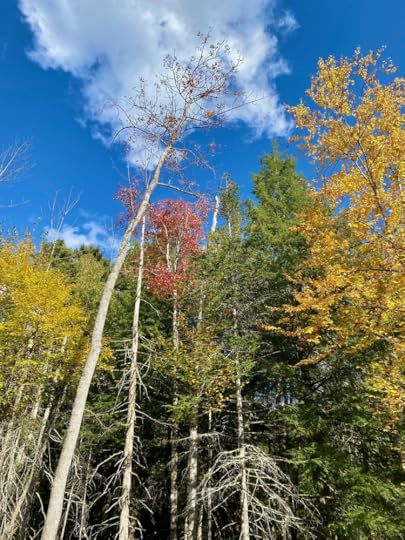
Lise Deguire's multiple award-winning memoir, Flashback Girl: Lessons on Resilience from a Burn Survivor, is available for purchase on Amazon, Barnes & Noble, Newtown Book Shop and The Commonplace Reader. Check out her TEDx talk "Scarred Not Scary"
July 23, 2024
Try Swiping Right
I saw an old friend last weekend (name and info changed.) Mary is a social worker, a few years older than I, smart and witty, quietly kind, with dark hair and deep brown eyes. Like me, she is no longer young. We worked together decades ago at an inner-city hospital, and I hadn’t seen her in years.
Mary and her husband split up recently and she hasn’t dated since. She is a quiet woman, and it is harder to meet people as the years go by. I asked her, “Would you consider a dating app? I have heard about apps for older people that you could try.”
In a flash, Mary took out her phone and began on-boarding to the site. She read the questions aloud to me. “How would you react if asked to change a behavior by your date?” “What is your ideal first date?” “Which picture appeals to you the most?” The questions were voluminous, but she completed the application, and she was in.
A few hours later, Mary checked the app. “I have seven responses!” Eagerly, she began checking out the candidates, their photos lined up, one smiling older man after the next.
“No.”
“Not him.”
“No way.” Mary kept scrolling.
I gazed at her. “But you haven’t read their profiles. You have no idea what they are like.”
“This one looks nice,” she pointed to a handsomer face. “And this one is OK.”
“Mary, what about what they wrote? You haven’t looked to see if they are educated, or close to their family, like you are.” She seemed to not hear me.
Several times during the evening, my friend received more responses from interested men. Each time, their photo determined her level of interest.
At the end of the evening, I tried again, “Please look at what the men wrote to you. See what kind of people they are. That is so much more important.” Mary smiled at me but didn’t’ seem to hear.
Finally, I sighed, ready to share my vulnerability. “Hey, if I were on a dating app, men would swipe right past my face. They would see my scars and keep scrolling. But if they read what I’d write, they might think that I’m well-educated, ethical, funny, and successful. But they won’t see any of that in my photo. They would have to read what I wrote to know that I’m a catch. Even you, Mary, do you want to be judged just on this alone?” My fingers traced a box in the air, framing her sweet, wrinkled, and no longer youthful face.
Mary looked thoughtful. “No, I wouldn’t,” she responded more carefully.
“Right. Promise me you will judge these potential dates by more than a photo.”
***
What makes a good relationship? Are we happily married because our husbands have cute faces?
Not at all. As a therapist, I hear many sad tales from clients feeling isolated, uncared for, and betrayed. “We have nothing in common,” bemoans one client. Another confides, “I think he lies to me.” Another recounts the hateful words lobbed at her during arguments.
You know what NEVER happens? My clients never say, “Oh but it doesn’t matter because he is so handsome.” In the long run, a partner’s appearance matters less and less, and a partner’s character becomes the entire story. The pleasure of an attractive face is an asset which is guaranteed to rapidly diminish. Beauty will always fade, quickly and irrevocably. Character can grow and blossom.
How much do looks matter when dating? How much should they? Attraction is the glue of romantic relationships, heating the air when one’s beloved enters the room. Falling in love is like a beautiful drug, sending our hearts over the Niagara Falls, keeping us fixated on our crush every hour of every day. Attraction is necessary, thrilling, and crucial.
Here’s the thing: attraction is relative. I have profoundly loved men who were tall and lean, men with high cheek bones and striking blue eyes. But the first man I truly loved had none of these. He was exactly one inch taller than me, and I am 5’3”. He was a little chubby with questionable hygiene. There was little objectively attractive about this man but I adored him. I adored the way he thought, his intensity, his playful humor, and our shared history. I would have done anything for him.
Like anyone, I notice a person’s face and figure the first moment I meet them. But within seconds, I focus on their eyes, their smile, their handshake, and their energy. Are they kind? Are they funny? Are they intelligent? Are they genuine? These qualities instantly override an attractive face. Within minutes, a homely person can become irresistible, and a handsome but cruel person can be repulsive.
Imagine what the men on Mary’s dating site might have written. The one with bad hair might be a retired physician who volunteers tirelessly for Doctors Without Borders. He might be a Mensa member, enjoy gardening, and rescuing dogs. He might have won a Nobel Prize and own four mansions. He might have been her soul mate.
The man with the handsome face might be unemployed, recovering from his 4th divorce, estranged from his children, and living in his elderly mother’s basement.
So why, why, why do we swipe left or right, as if that is the sole variable? I promise you that a homely person can shine like a Greek god, when their eyes sparkle with warmth and care. I equally promise you that you won’t care how attractive a man is when he is gaslighting you.
As a burned person, and an activist, I spend a lot of time with others with visible difference. I have burned friends, friends with eye differences, friends with skin issues, and so on. Generally speaking, these are kind people with depth. Having suffered, most of us are sensitive to people’s pain, and cheerful in the face of adversity. It is hard to face the world looking different, and people who do so often develop strong social skills and a sense of humor. Most of us, having suffered, are kind-hearted towards others’ misfortunes. These qualities: emotional depth, sensitivity, pluck, social adroitness, and humor, all of these qualities make for a fine companion in life. Often, people who lack the ease of natural beauty develop far richer qualities, depth and sensitivity which will only grow over decades.
Try swiping right.
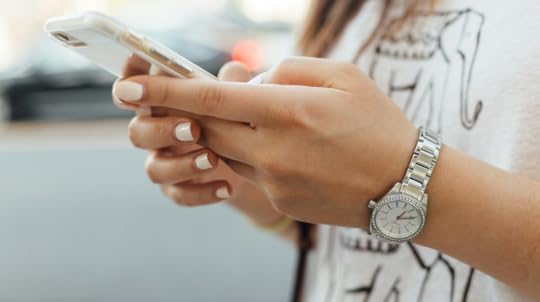
Lise Deguire's multiple award-winning memoir, Flashback Girl: Lessons on Resilience from a Burn Survivor, is available for purchase on Amazon, Barnes & Noble, Newtown Book Shop and The Commonplace Reader. Check out her TEDx talk "Scarred Not Scary"
June 5, 2024
Searching for "The Roses Man"
I met “The Roses Man” when I was 5 or 6 years old, attending Franklin Elementary School in East Orange, New Jersey. I was freshly burned, and recently discharged from an endless hospitalization. I may have been well enough to go home, but I was ill-prepared to face existence. My new scars were raised purple and red, blanketing two-thirds of my body. The lower half of my face was melted away, requiring a reconstructed neck, chin, and bottom lip. I was hideous, a fact of which many children taunted me as they yelled “Yuck” in my face and fled from me.
I trudged home alone from school, often crying. But one afternoon, an older man introduced himself, and invited me into his backyard, which burst in a multi-colored, immersive haven of rose bushes. This man carefully cut some fresh roses, creating a fragrant bouquet. He covered the stems with tin foil so the thorns wouldn’t hurt my hands and handed me my gift. I skipped home, overjoyed.
“The Roses Man” made me many more bouquets of flowers. Each time, he helped me feel safe and treasured, instead of rejected and ugly. Decades later, I realized that he had likely witnessed me walking past his house crying, and he did what he could to brighten my life. He may not have thought his efforts made much of a difference. But they did.
For years, I have told the story of “The Roses Man,” which also appears in my book, Flashback Girl. I tell his story as an example of the power of compassion, the small things we can do to mitigate suffering in our world. I say, "I’m still talking about The Roses Man, 50 years later, even though I don't know his name. So, remember, if you are well and able, notice people who are suffering and help them. Be ’The Roses Man.’”
This is how my presentations about resilience have concluded for the past five years. I have given this talk in Maine, Arizona, California, even New Zealand, to packed audiences. Thousands of people know “The Roses Man” story, many people weeping when they hear it. It's a powerful ending, but it has always bothered me that I could not name this man, my angel.
Recently, I connected on a Facebook group for my old elementary school. I reunited (virtually) with a number of classmates. At some point I realized, maybe someone can finally help me identify “The Roses Man.”
I gave a brief description of the house’s location which, given that I moved away when I was 9, I remembered a lot better than you think I might. That walk from school was challenging, and I can envision every turn I took, back and forth from school to my house. I had a felt sense of The Roses Man’s house. Leaving school, I crossed the street and made my first turn. His house was slightly up on the left-hand side of a road whose name I couldn’t remember. But Google Maps told me: Colonial Terrace.
Within ten minutes of my Facebook inquiry, an old friend replied, “That was Mr. Sam Elder.” Others chimed in as well, with their own recollections of his kindness.
Mr. Sam Elder.
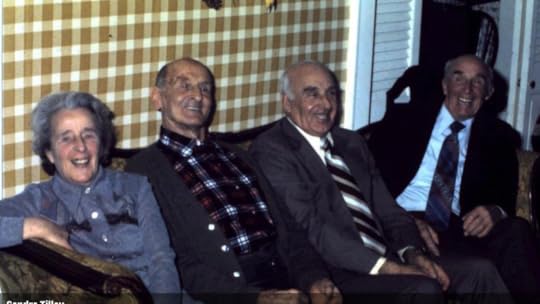
Here’s what I know now about Sam Elder. He was one of 12 children, and emigrated from Ireland. He married a woman named Anna. He worked as a groundskeeper at a local country club until his retirement. He and Anna never had children, and she died relatively young. Widowed and alone, Mr. Elder moved into the house on Colonial Drive with two of his siblings. Using his professional gardening talents, he grew the walls of glorious roses that filled their backyard. And, I guess, he watched the children who walked by his house after school, and noticed the little girl with half a face, whom everyone called ugly.
Mr. Elder is deceased. But Facebook connected me with his grand-nieces. I found out which living relative was closest to him. I sent her a heart-felt letter, and a copy of Flashback Girl with a small heart next to the page on which he appears.
I sent a miniature rose bush, blooming with tiny yellow buds.
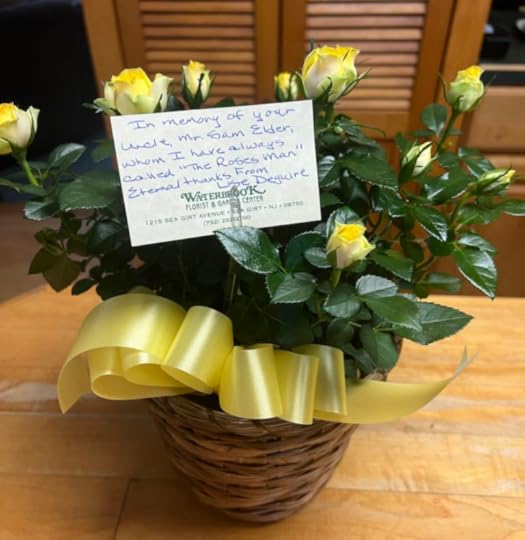
******************
There is a line at the end of the Brahm’s German Requiem which always touches me. I know the lyrics because I once sang the piece. However, the words actually come from the Bible, Revelations 14:13. “Blessed are the dead, which die in the Lord from henceforth. Yea, sayeth the spirit, that they may rest from their labors; and their works do follow them.”
“And their works do follow them.”
The smallest things we do impact others. I understand this much more as I age and as I heal. People who are profoundly wounded rarely have the capacity to think about others; they are fully focused on survival. They may feel they can barely breathe. They may not be capable of kindness, or even basic civility.
Those of us who have healed (more or less) should grant grace to struggling people. We are the lucky ones. I think those of us who are healed have another responsibility: to help others as best we can. In this, human nature can flower in endless varieties. Some people help by rescuing animals. Others help by volunteering at the food bank. Others help by becoming firefighters. These are big ways to help.
Here’s the thing, though. We can also help in the smallest of ways, what I call “micro-moments of kindness." I still remember nurses who took an extra minute to tuck in my blanket when I was a lonely little girl on the burn ward. My surgeon, Dr. John Constable, used to patiently hold my foot when I underwent anesthesia, soothing my terror. These moments took just seconds, and probably seemed insignificant to the professionals at the time. But I could see the kindness in their eyes. I felt their benevolence in my bones. I remember them, decades later.
We don’t have to work extraordinarily hard to make a difference. Being kind doesn’t have to take long or cost us a cent. However, we do need awareness. We need to pop out of our natural self-involvement and truly see the people around us. Help a harried mother carry her stroller up the stairs. Allow a person walking in the rain to cross in front of your car. Notice that little girl crying and walking alone from school.
I hope that when I die, my good works will follow me. I fervently hope that my good works will outnumber the times I have been thoughtless, impatient, judgmental, and unkind. I have been those things too. Sometimes I was hurting too much to know what I was doing. Sometimes I was tired and cranky and simply lost my s--t. Sometimes I was plainly clueless. Those times still happen, despite my best intentions, because I am human and as imperfect as anyone else.
I doubt that Mr. Sam Elder thought that his giving roses away would ever be a story in a book, or the subject of keynote presentations. But he was aware enough to see suffering. He had a heartfelt wish to intervene. In this small way, he became an eternal hero. To this day, the gift of flowers, multi-colored and redolent, makes me feel profoundly loved.
If you are well, be like The Roses Man, Mr. Elder. There are so many ways to make a difference and our world needs all the kindness we have to give.
Thank you, Mr. Sam Elder. Your works follow you, in fragrant trails of yellow, white, pink and red rose petals.
Our works follow us all.
Lise Deguire's multiple award-winning memoir, Flashback Girl: Lessons on Resilience from a Burn Survivor, is available for purchase on Amazon, Barnes & Noble, Newtown Book Shop and The Commonplace Reader. Check out her TEDx talk "Scarred Not Scary"
May 3, 2024
How the Witch Became a Model
When I was five, my heaven was a tiny dusty theater at Upsala College in East Orange, New Jersey. My father taught music history there. But the best part about his job for me, and probably for him, was music-directing for the theater, Workshop 90.
To even call Workshop 90 a theater was bold. The building started its life as a humble carriage house, which was eventually rebuilt into a theatrical space. The little building held a few seats (120?) covered in faded blue velvet. The stage was small, making any choreography a laughable challenge. The pit band area was a postage stamp, somehow accommodating an upright piano, at which my father masterfully directed his band, consisting of him, a bassist, and a drummer. There was a larger backstage area, with a makeup room, full of rectangular mirrors lined with plain light bulbs, a costume room, a prop room, and a back area, piled high with wood for set construction.
I didn’t care about the construction, or the costumes. I was pulled, like a moth to a flame, to the seats in front of the stage. I sat there in the dark, watching rehearsal after rehearsal, transfixed. I came to every rehearsal my dad would allow. I knew everyone’s lines, songs, and blocking.
To set the stage further, as it were, I was five. It was less than a year since the fire which had obliterated two-thirds of my body. At this point, my scars had not yet faded, and were bright red. I did not yet have a bottom lip, so I used my tongue to fill in, helping me speak. I was a hideous child.
But I was not hideous in this theater. Life was painless for me in this theater. Here, I was the baby daughter of the fearsomely talented music director. Even though I was five, my adoration of the theater established me as someone the students took seriously. Over the years, I was given jobs. I ushered people to their seats. I helped organize tickets sales. I worked props. I played flute in Dad’s pit band. But my greatest joy was when I got to act.
My only part in a Workshop 90 production was “The Balloon Girl” in the musical, Gypsy. This ill-fated character appears briefly in a vaudeville act, and has no lines. Her claim to fame is that she has air-filled balloons tied all over her dress, but is chased away by Mama Rose in a pique, holding a sharp pin. My dress was a satiny light blue, cinched at the waist, with a white puffed sleeve top underneath. The costume lady (who in retrospect was probably 21), carefully pinned balloons all over my blue gown. I walked on stage, Act 1, Scene 1, and stood in the background. At some point, Mama Rose turned on me, pulled out her hat pin and chased me off stage. That was my acting debut.
There were no more roles for me at Workshop 90. I did land the role of the Wicked Witch in my school's 3rd grade production of Hansel and Gretel. I had one furious solo song, during which I galloped around the stage on a broom, singing and pretending to fly. I wore a fetching black gown with jagged taters at the hem and sleeves, and a pointy black hat. And I really could sing.
At the end of my triumphant Witch song, I stood for my applause, waiting to bow. Instead, the audience booed. I was so confused. I made an intensely committed witch. Why would they boo?
“It’s because you play the Witch. They were booing your character, not you.” Mrs. Bauman, my teacher, kindly whispered in my ear while we huddled in the wings.
To this day, I don’t know why they booed me. Was it because I played the Witch? Or was it because I looked like a witch?
Other roles came, here and there. I joined the high school drama club, a blessed collection of kids who were traumatized, gay, or both. I fit in there, and no one booed me, not even when I played Lizzy Borden, or that mean nun in the Sound of Music who campaigns to kick Maria out of the convent.
I went to college as a drama major, immediately enrolling in”Intro to Acting.” Scene reading after scene reading, I saw my star rising in the professor’s eyes. By the semester's end, he cast me in a scene from Chekhov’s The Seagull with the best male actor in the class. We performed the scene, just to the class, but we were a triumph. After that, satisfied with my success and lack of booing, I put acting aside, and majored in psychology.
I was too insecure to put my talent to the test. I also mysteriously never got the roles I envisioned. I thought I was the plucky alto belter, like Nelly Forbush or Ado Annie. Instead, I got the Witch or Mean Nun. My pride wouldn’t let me be conscious of the truth, but I did know it somewhere inside myself: there was no path forward for an actress scarred on two thirds of her body.
Until there was.
Recently, an agency called Zebedee Talent put out an open call for models/actors with visible difference. I heard about the opening through a friend and immediately imagined applying. Then I thought, “no one wants a model in her 60s”, and put the idea aside. Still, the possibility kept reappearing in my head, like an internal argument.
“I could apply.”
“That’s ridiculous.”
“But I could. They didn’t say only young models.”
“You have never modeled a day in your life.”
“But they need actresses too. I can act.”
“Sure, and there are so many opportunities for late middle-aged, profoundly burned actresses.”
Back and forth my thoughts churned until one morning, I declared “Enough!” and applied. My long-suffering husband Doug, (who really always has better things to do), snapped several photos of me against a neutral backdrop. I recorded a quick video. I measured my inseam (fine) and my hips (oh dear), completed the forms, and hit “send.”
Two months later, I received an email from Zebedee entitled, “Invitation to Join.” I was stunned. To onboard, I would need full fashion shots, and a recorded monologue. February became frenzied. One profoundly raining morning, I drove to a fashion photographer’s studio, four outfits in tow. I felt a little silly, posing, changing clothes, but she told me I was a natural.
My photos proudly displayed on the Zebedee USA website, I wondered if I would get any parts. Again, what call is there for a late middle-aged burned model/actress? Then, one morning, I got my first audition. “You have a request to self-tape!” Wow! I scrolled down to learn more about the part. The character’s name was “Louisa.” Great, I thought, Louisa, just like the blonde daughter in the Sound of Music. I always liked that name. And so much better than that mean nun!
I scrolled further. The producing studio was a well-known medical company. Hmm, I thought. Well, this definitely isn’t CBS, or a TV show, or a movie. It’s one of those medical videos. Fair enough. Then, I scrolled to the name of the video. “Heart Failure, 2”
Heart Failure 2. Like Bridesmaids 2. Or Trolls 2. Only about heart failure.
Here was my "big break." I would play a patient in heart failure for a medical film. But not the even first Heart Failure. Just Heart Failure 2. And you know, I laughed and laughed until tears streamed down my face. Undaunted, I recorded and submitted the tape. I did not get the part. (Someone apparently did a better job of being in heart failure than I.)
Perhaps I will never get a role in this new glamorous opportunity as a model/actress. To me, I'm simply thrilled to have the chance to do something I love, something I wasn’t considered pretty enough to do back when I was actually younger and prettier, because I was also scarred. Now, decades later, as the world is changing, I have a chance to act specifically because I am visibly different, and not despite it. Now, there is even an agency that exists to promote those of us who look different.
I hope I get cast in something, sometime. It has been many decades since Mama Rose chased me off stage with her hat pin. More importantly, I know it could mean a lot to disfigured people out there, to see someone who looks like them on screen. I can only imagine how I would have felt, the Witch who got booed, to see a scarred person on stage. I would have felt proud. I would have felt less alienated.
I also know that the more the general public sees someone who looks like me on screen, the more people will get accustomed to disfigurement. People stare at others when their appearance is surprising. It is natural, simple human nature. But if people who look different appear on screen (not as villains or monsters), our faces and bodies will no longer be shocking. Maybe we can arrive at a day when people see a burned girl in a play and no longer feel feel the need to stare, and god knows, the need to boo. Maybe they will see a little burned girl, dressed up in her Witch costume and simply think, “hey, what a sweet little actress.”
How nice would that be?
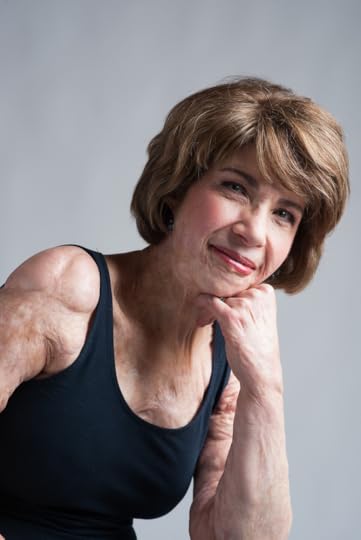
Lise Deguire's multiple award-winning memoir, Flashback Girl: Lessons on Resilience from a Burn Survivor, is available for purchase on Amazon, Barnes & Noble, Newtown Book Shop and The Commonplace Reader. Check out her TEDx talk "Scared Not Scary"



